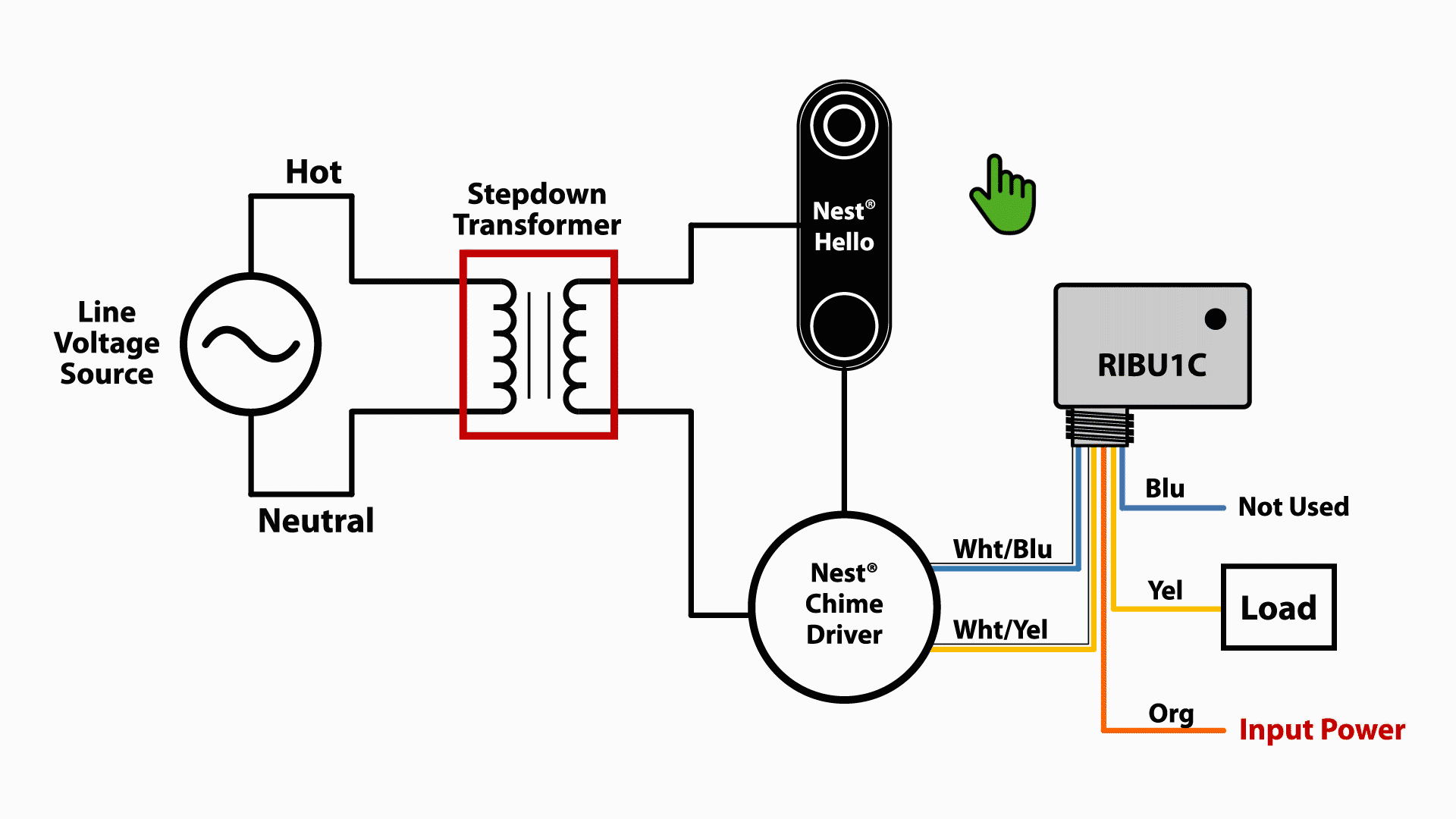The RIBU1C relay from Functional Devices is designed to solve this problem. Compact, reliable, and compatible with low-voltage setups, it ensures your Nest Hello doorbell works seamlessly with traditional chimes and home wiring. In this blog, we’ll explore why a relay may be necessary, how the RIBU1C works, and tips for installation.
Why You Might Need a Relay for Nest Hello
The Nest Hello doorbell operates on low voltage (typically 16–24Vac) and may not provide enough current to power existing mechanical or electronic chimes reliably. In these cases, a relay is needed to bridge the gap between the smart doorbell and your chime system (or maybe a NuTone doorbell system).
Common scenarios include:
- Existing chimes that require more power than Nest Hello can provide
- Multi-chime setups where multiple chimes are wired throughout a home
- Integration with home automation systems that require a dry contact signal for triggers
By adding a relay, you ensure proper chime operation, protect the doorbell circuitry, and expand integration possibilities.
Introducing the RIBU1C Relay
The RIBU1C is a compact, single-pole relay designed for low-voltage applications like smart doorbells. Key features include:
- Voltage compatibility. Works with 16–24V AC systems.
- Contact rating. Sufficient for most residential chime loads.
- Compact design. Fits easily in chime boxes or junction enclosures.
- Reliability. Solid-state construction ensures consistent performance over time.
This relay acts as a bridge between the Nest Hello and your existing chimes, allowing the doorbell to trigger them without risking low-voltage system issues. Its simple design makes installation straightforward, while still providing flexibility for more complex setups.
How the RIBU1C Works with Nest Hello
The RIBU1C relay operates as a low-voltage interface between the Nest Hello doorbell and your chime system. When the doorbell button is pressed:
- The Nest Hello sends a small voltage signal.
- The RIBU1C relay detects this signal and closes its contacts.
- The closed contacts allow full voltage to flow to your mechanical or electronic chime, triggering it reliably.
This setup ensures that the doorbell can activate your chime without overloading the Nest Hello circuitry. The relay essentially acts as a “booster,” preserving both the smart functionality and traditional chime operation.
Below is a generic wiring diagram to visually convey how the RIBU1C would be used in this system:

What's great about the RIBU1C is that the low voltage coil input is a range from 10-30 Volts. A lot of people trying to find a relay for this application had to use an additional 24 Vac transformer somewhere. The Nest Hello used 16 Vac from an existing doorbell transformer. The added relay would likely have a 24 Vac coil. The RIBU1C coil is flexible and can take in the 16 Vac signal. No need for a new transformer!
The blue, yellow, and orange wires provide access to the relay contacts. The contacts on the RIBU1C relay are rated to 10 Amps, are dry, and can be used in any way needed within the contact ratings listed in the datasheet. The above diagram is rough, so please be sure to follow Nest recommendations for wiring the Nest Hello.
Installation Tips
Installing the RIBU1C relay is straightforward, but a few best practices can help:
- Turn off power to the chime circuit before installation.
- Locate your chime transformer to ensure voltage compatibility.
- Connect input terminals of the relay to the Nest Hello wiring.
- Connect output terminals to the chime circuit.
- Test the system before securing the relay in place.
The compact design allows the RIBU1C to fit neatly inside most chime boxes or junction enclosures, minimizing wiring clutter.
If you’re inexperienced or uncomfortable with installing electrical components, don’t put yourself at risk. Hire a licensed electrician instead.
Using RIB Relays in Building Automation Solutions
Integrating devices like the Nest Hello into building automation solutions often requires the flexibility to work with existing wiring and power limitations, and that’s where the RIBU1C shines. Its low-voltage coil input range and dry contact outputs make it easy to bridge the gap between modern smart devices and legacy chimes, doorbells, or notification systems within a building. This is the same flexibility that makes RIB relays a go-to tool for contractors and facility managers looking to expand building automation capabilities without overcomplicating installation.
When looking at control relays, the RIBU1C is a practical example of how relays can bring reliability and ease of integration to your projects. Whether you’re enabling alerts, controlling door strikes, or managing lighting tied to occupancy sensing, RIB relays help your building automation systems stay organized and efficient. To explore how the RIBU1C or other Functional Devices RIB relays can enhance your system, contact our team for guidance and product recommendations.

